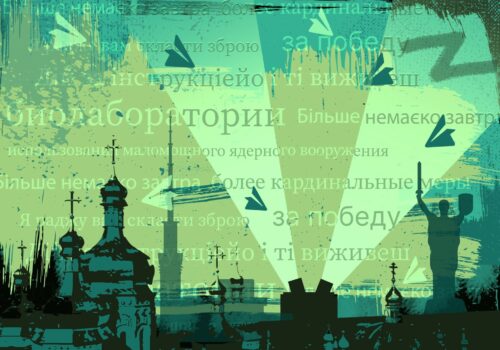
Information warfare in the South Caucasus and Moldova

The four countries that are the focus of this report— Armenia, Azerbaijan, Georgia, and Moldova—navigate a complex geopolitical landscape. This complexity is reflected in their information spaces. Their collective legacy bears the indelible imprint of Soviet imperialistic rule, yet each is marked by a distinct identity and national trajectory that defy collective generalizations as mere “former Soviet republics.” Russia’s lingering influence continues to manifest in varying degrees across the four countries, each facing its unique vulnerabilities, shaped by domestic and external political landscapes.
Armenia, nestled in the South Caucasus, balances a historically rooted alliance with Russia and aspirations for greater independence. However, this delicate relationship has deteriorated since the war in Ukraine began. Azerbaijan, a regional powerhouse endowed with vast oil wealth, walks a fine line in its diplomatic relations, balancing its ties with Russia and the West. Georgia, long pursuing Euro-Atlantic integration and advancement of democracy, constantly faces pressure from Russia, with Moscow maintaining a presence in the 20 percent of Georgian territory that it has occupied since 2008. Moldova, grappling with its internal divisions, including a self-proclaimed republic and an autonomous region, and mindful of the war next door in Ukraine, fends off Russian interference efforts that seek to undermine its stability and autonomy.
Since Russia’s February 2022 invasion of Ukraine, the Kremlin, along with actors aligned with its interests, has targeted all four countries with a barrage of information operations and broader influence efforts. This report examines the information landscape of each of the four countries from a political and security perspective, focusing on the period preceding the February 2022 invasion of Ukraine through 2024. It also offers a comparative analysis of the information environments in the four countries, identifying patterns and notable differences.
Authors
Eto Buziashvili, Research Associate
Sopo Gelava, Research Associate
Givi Gigitashvili, Research Associate
Ani Mejlumyan, Research Assistant
Victoria Olari, Research Assistant
Related content
Image: Illustration of Armenia, Azerbaijan, Georgia, and Moldova. Laura Gillette/Unsplash



